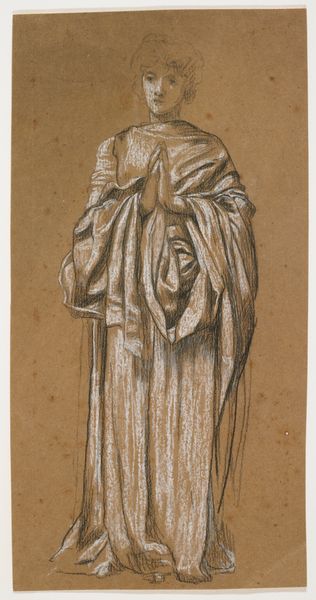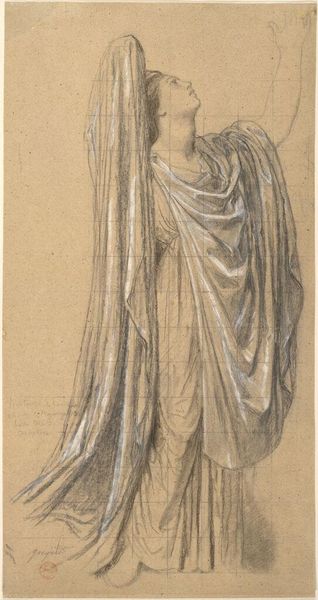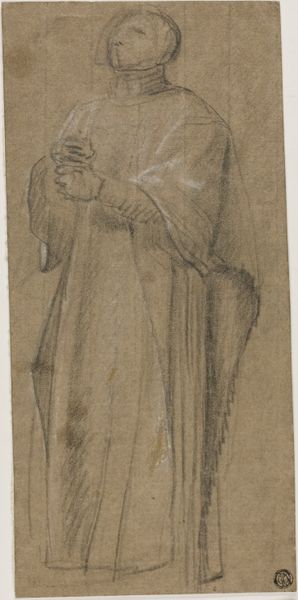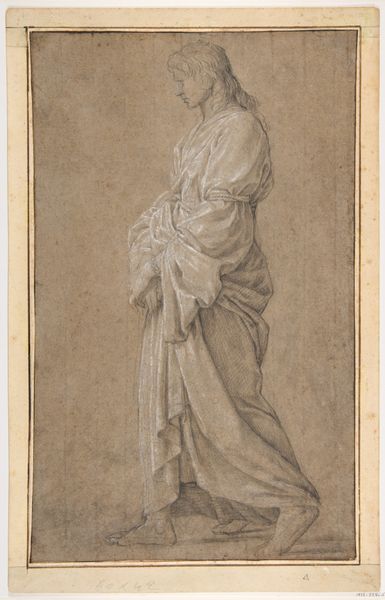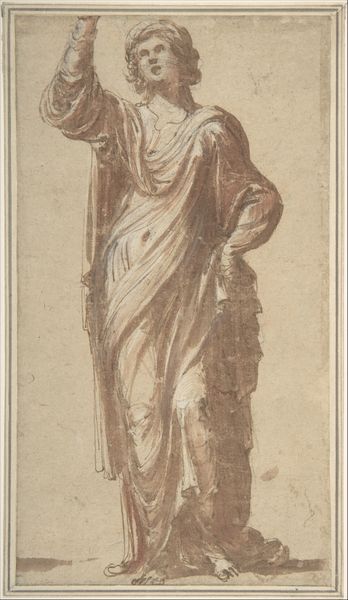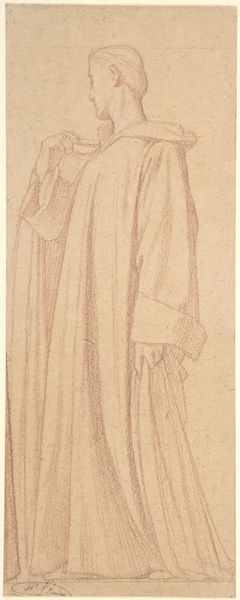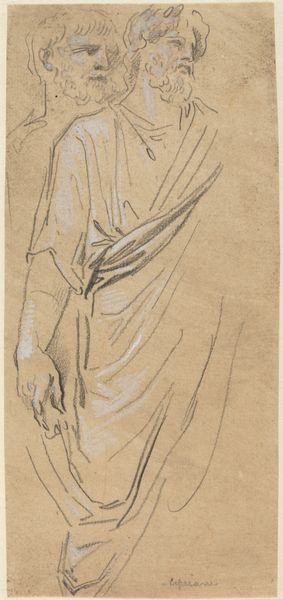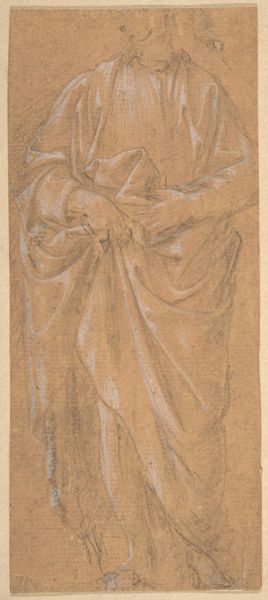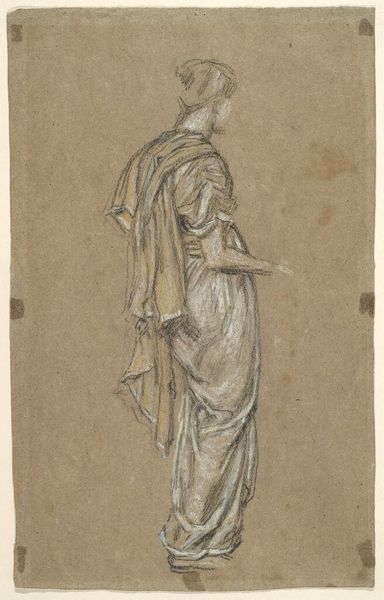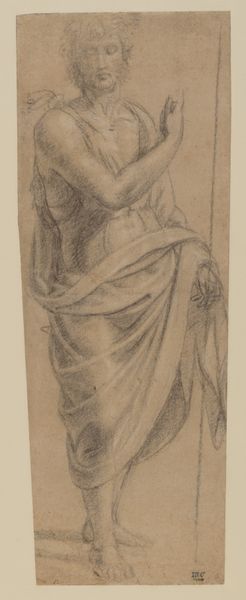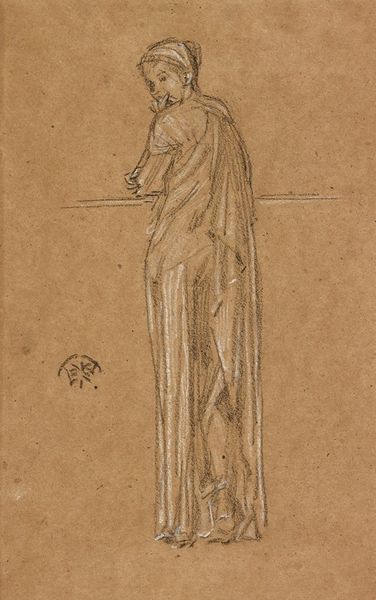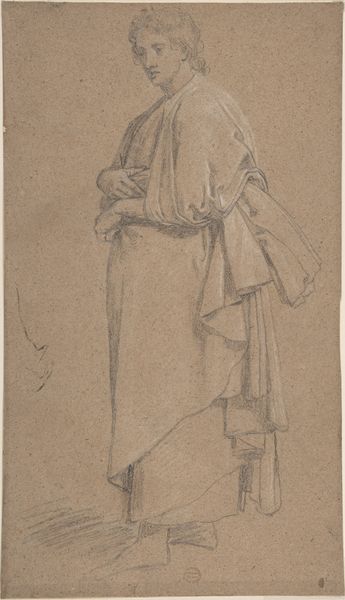
drawing, paper, pencil
#
portrait
#
drawing
#
figuration
#
paper
#
pencil drawing
#
pencil
#
academic-art
Dimensions: Sheet: 14 9/16 x 8 in. (37 x 20.3 cm)
Copyright: Public Domain
Curator: I find myself captivated by the texture and tonality in this study. What are your initial thoughts? Editor: The overall impression is ethereal, almost spectral. There's a contemplative quietness about the figure. It looks like classical drapery, something Greco-Roman, against what almost seems to be brown paper, giving the whole piece a curious intimacy. Curator: Precisely. This drawing is by Albert Joseph Moore, entitled "Draped Model," rendered with pencil on paper, sometime between 1865 and 1867. Moore's work often presents women within aesthetically refined settings, frequently alluding to classical themes. It's currently housed at the Metropolitan Museum of Art. Editor: I can see that academic approach; that pre-Raphaelite engagement with classical and romantic subject matter. The way the drapery clings to her form creates movement and defines the contours, even obscuring them with shadows. Her expression is hidden and seems somehow secondary to that flowing white garment. It’s clearly all about the depiction of form, volume, and line, playing with shadow and the folds. Curator: Definitely. The work reminds me of the complex ways Victorian artists engaged with, but often sanitised, classical imagery. Note how Moore carefully skirts any overt sensuality through that very obscuring of the figure. The pose is not provocative, rather, it carries an aura of dignified introspection, or, perhaps, boredom? Consider, too, that throughout the 19th Century there was a revival of the Pre-Raphaelite interest in women of the ancient world but, as women entered Victorian social consciousness more broadly, their visual and social treatment demanded increasing "respectability." Editor: Yes, respectability certainly seems key here. But it's also important to see how Moore skillfully balances representation with abstraction through this delicate manipulation of tone and texture. Curator: Agreed. Ultimately, though, it makes you consider the artist's, and the period’s, gaze, which ultimately constructs this woman— and womankind—as simultaneously present and forever inaccessible. Editor: On balance, despite the implied historic politics, the subtle brilliance here is in the control and confidence of Moore’s pencil line, with its ability to suggest and never quite state, allowing our eye to complete the composition.
Comments
No comments
Be the first to comment and join the conversation on the ultimate creative platform.
